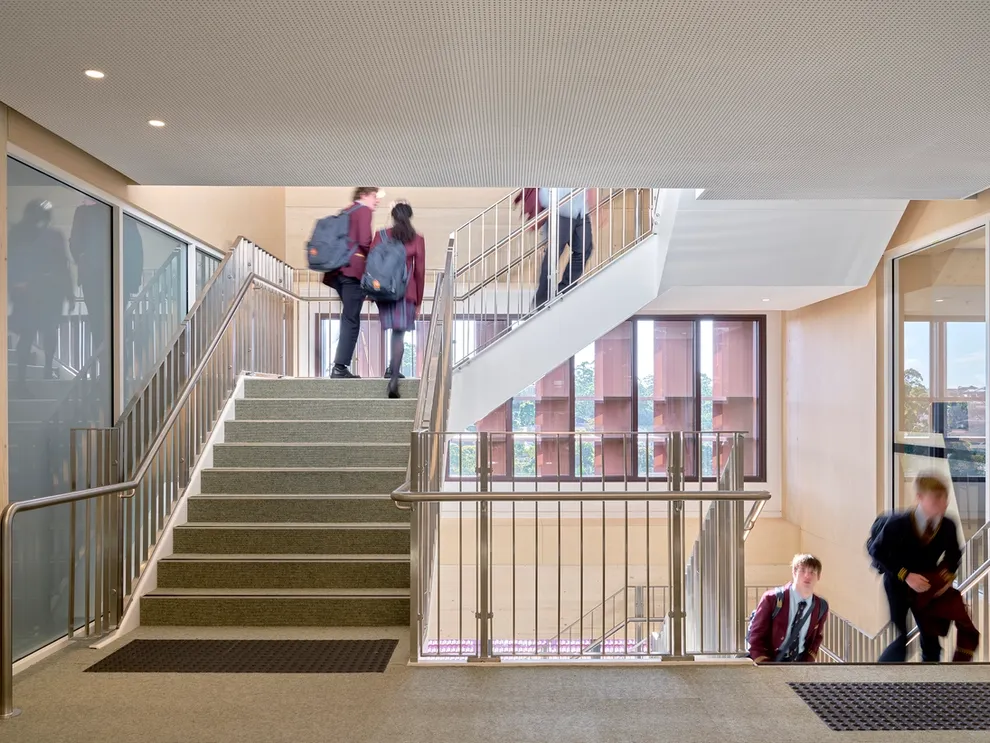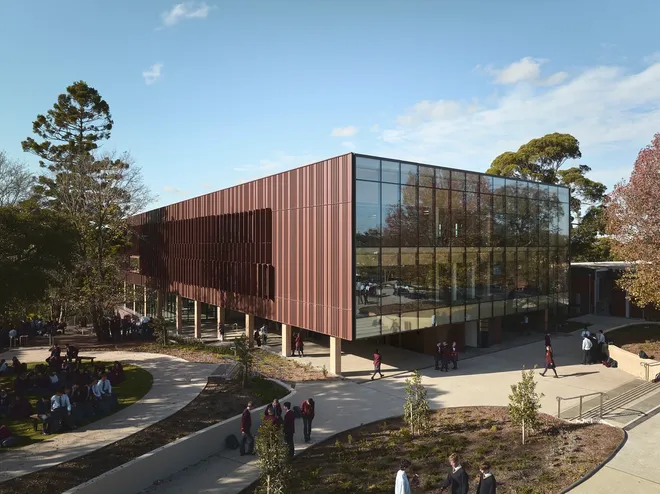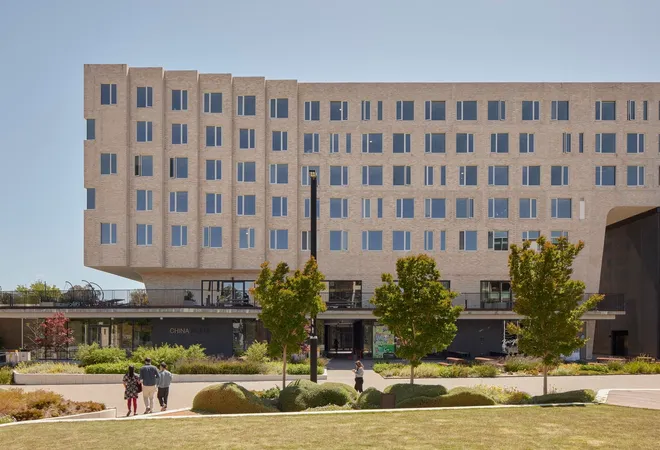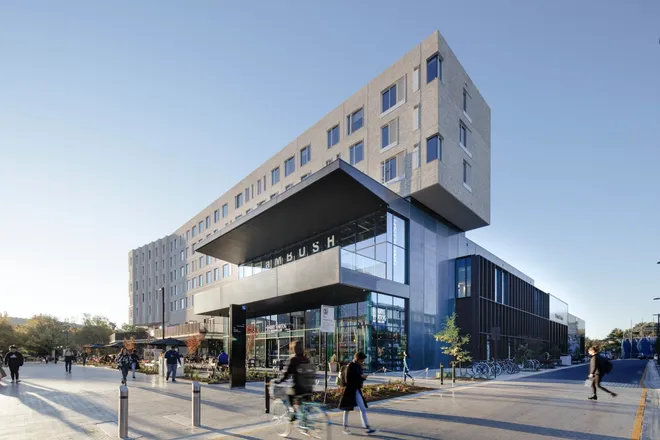June 21, 2023
Teaching with Timber: Oakhill College Innovation Hub
The recent completion of Oakhill College’s Innovation Hub represents a milestone for both the school and BVN’s journey Towards Net Positive.

The Innovation Hub, which officially opened its doors in Term 2 of 2023, is a truly transformative learning environment for the high school. Featuring state-of-the-art TAS (Technology and Science) workshops, as well as design, computing and robotics labs, the new facility is aimed at empowering students to explore new ideas and become knowledge creators of the future.
“Innovation” refers not just to the learning taking place inside, but the design and construction of the building itself.



The first stage of a gradually unfolding masterplan, the design marks a significant departure from the more traditional classrooms that make up the majority of the historic Castle Hill campus. The Innovation Hub was built using prefabricated Timber structural components are manufactured off-site, ready for on-site assembly. Pre-fabricated components can considerably reduce construction time and carbon emissions produced by heavy vehicles transporting materials to site.

The 4,300sqm structure is the first large-scale hybrid timber structure of its kind in Sydney’s northwest. The ground-breaking design is even more significant, given its appearance in a suburban high school setting.

The wellbeing of the students and the concept of ‘building as teacher’ formed a large part of the design approach for this project. The school’s commitment to this approach demonstrates that Oakhill takes innovative thinking, learning and teaching seriously.
Exploring the educational benefits of timber
Constructed using glulam beams Glue laminated timber. An engineered wood product manufactured by bonding together pieces of timber, known as laminates A prefabricated product made of several layers of lumber boards, stacked crosswise at 90-degree angles and glued together to form structural panels. Lightweight and exceptionally strong, it can be used to replace concrete and steel in modern construction.

Our team commenced work on the project in 2019 – the same year NSW experienced its worst ever climate-related disaster, the Black Summer bushfires. Oakhill’s community is no stranger to bushfire danger and climatic extremes. An agricultural school when it first opened in 1937; while the farmlands around Oakhill have been swallowed up by suburbia, it remains in a particularly fire-prone pocket of the Hills District.
Another reason for the mass timber construction of the Innovation Hub was prioritising the use of natural materials as a celebration of the school’s rural history, its scenic surrounds and its connections with nature.
Given the carbon positive, fire-resistant credentials of mass timber construction, the Innovation Hub presents as a model for future sustainable, climate resilient buildings in the region. The build also incorporates Passive House principles for increased thermal comfort, airtight envelope and reduced energy use.

Finally, the large amounts of exposed timber (both internally and externally) are in part, the result of research into the benefits of biophilia in educational environments. The use of visible, tactile natural materials in buildings has known impacts on reducing stress, improving concentration and focus and enhancing the wellbeing of staff and students.
Designed as a place where new ideas can flourish, now and among generations of students to come, Oakhill’s Innovation Hub presents a vision of the future of Australian schools, today.






